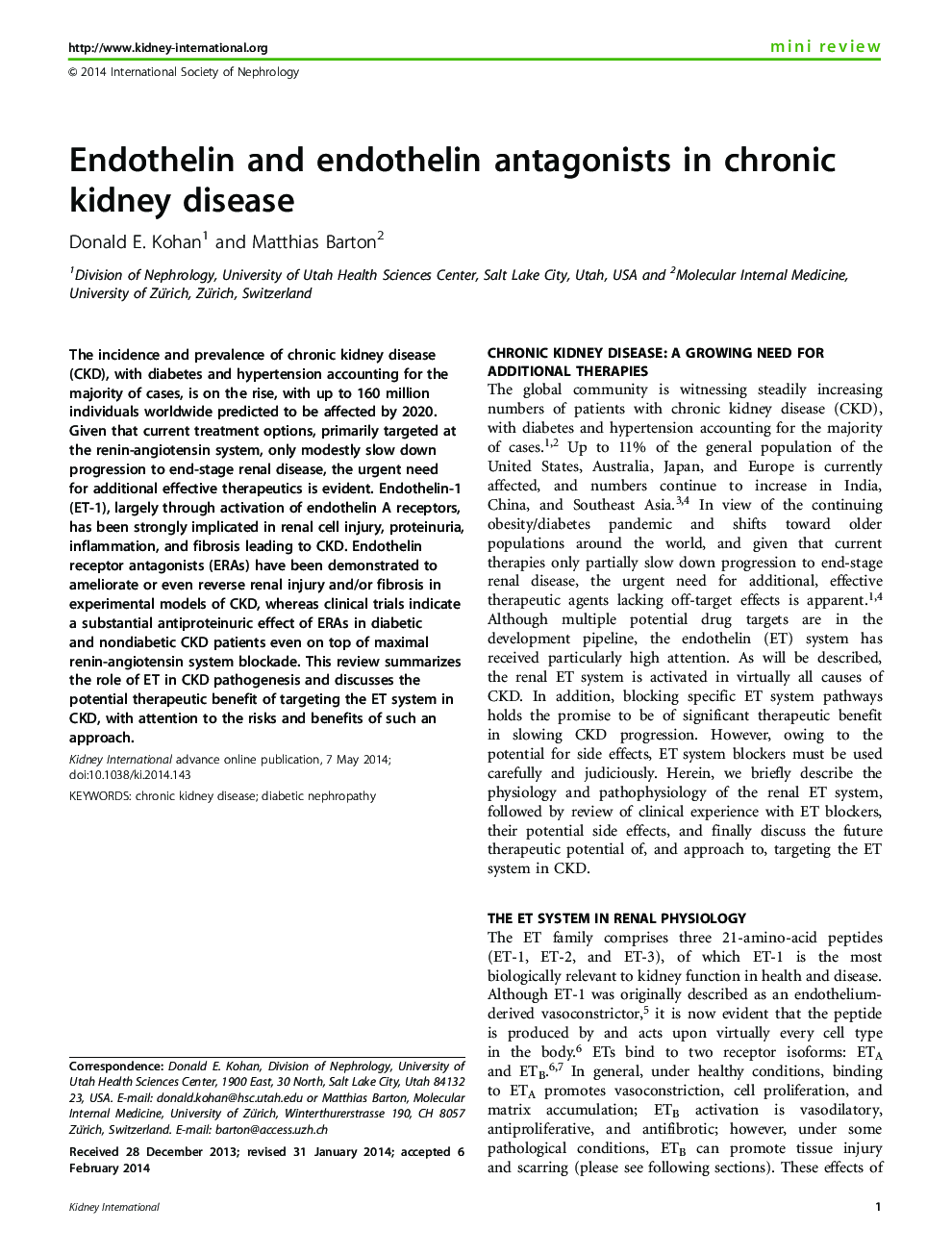| Article ID | Journal | Published Year | Pages | File Type |
|---|---|---|---|---|
| 6164249 | Kidney International | 2014 | 9 Pages |
Abstract
The incidence and prevalence of chronic kidney disease (CKD), with diabetes and hypertension accounting for the majority of cases, is on the rise, with up to 160 million individuals worldwide predicted to be affected by 2020. Given that current treatment options, primarily targeted at the renin-angiotensin system, only modestly slow down progression to end-stage renal disease, the urgent need for additional effective therapeutics is evident. Endothelin-1 (ET-1), largely through activation of endothelin A receptors, has been strongly implicated in renal cell injury, proteinuria, inflammation, and fibrosis leading to CKD. Endothelin receptor antagonists (ERAs) have been demonstrated to ameliorate or even reverse renal injury and/or fibrosis in experimental models of CKD, whereas clinical trials indicate a substantial antiproteinuric effect of ERAs in diabetic and nondiabetic CKD patients even on top of maximal renin-angiotensin system blockade. This review summarizes the role of ET in CKD pathogenesis and discusses the potential therapeutic benefit of targeting the ET system in CKD, with attention to the risks and benefits of such an approach.
Related Topics
Health Sciences
Medicine and Dentistry
Nephrology
Authors
Donald E Kohan, Matthias Barton,
